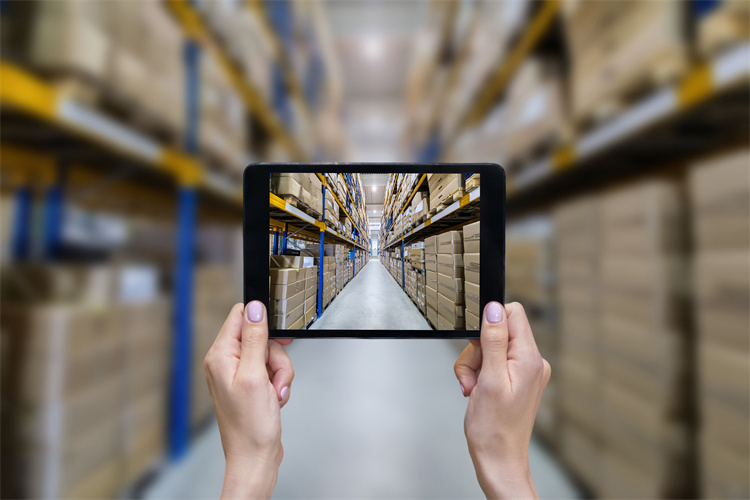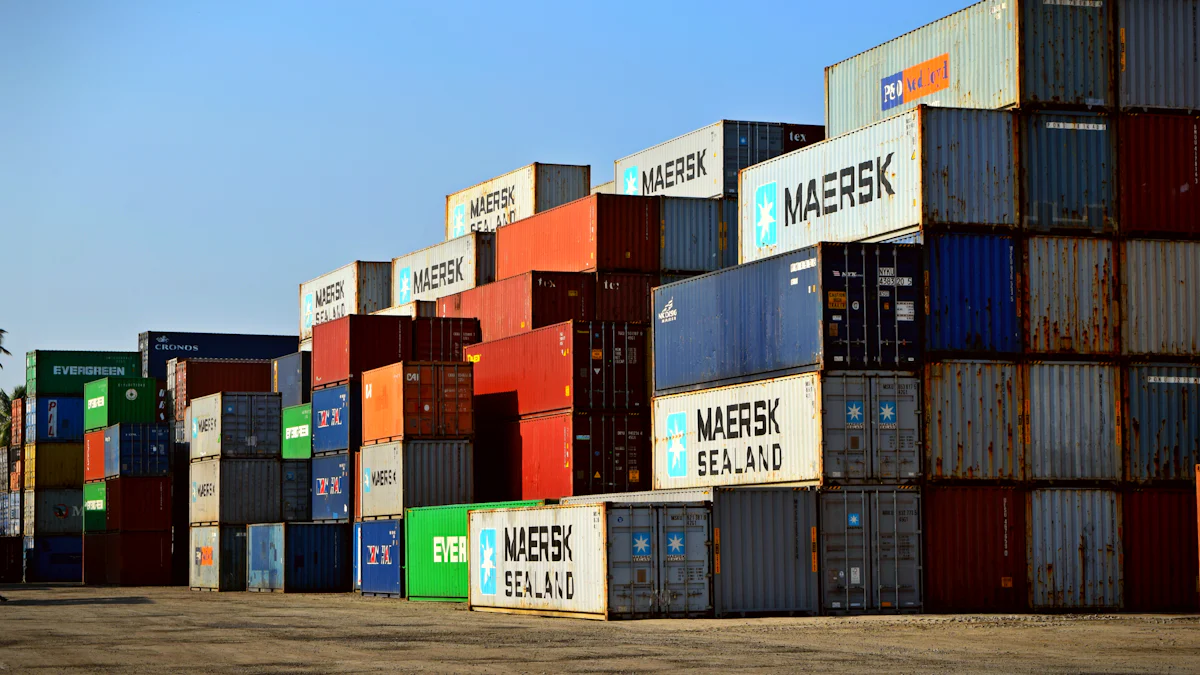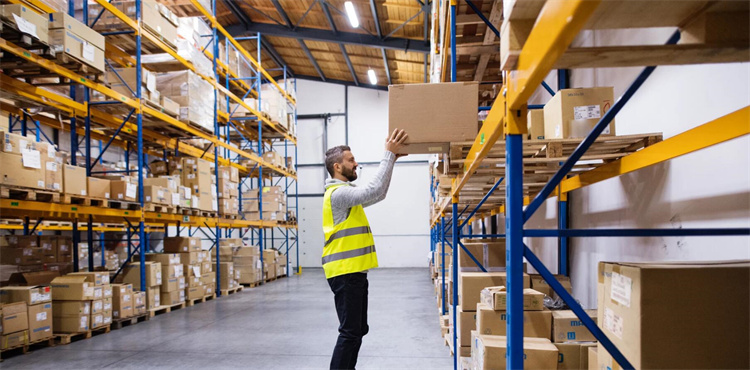Big Data Trends Transforming the Logistics Industry in 2025

Big data is revolutionizing the logistics industry, driving efficiency and innovation. You can now leverage advanced analytics to predict demand, optimize inventory, and enhance risk management.
86% rely on transportation management systems.
78% track orders and inventory in real time.
This adoption ensures better transparency, faster deliveries, and cost savings.
Key Takeaways
Big data helps logistics by tracking in real-time and predicting outcomes. This makes deliveries quicker and customers happier.
Using tools like AI, IoT, and blockchain can make work easier, cut costs, and make supply chains clearer.
Fixing problems like combining data and keeping it safe is key to getting the most out of big data in logistics.
The Current Role of Big Data in the Logistics Industry
Applications of data analytics in supply chain management
You can see how data analytics has become a cornerstone of modern supply chain management. Companies use it to optimize routes, forecast demand, and manage inventory. Real-time tracking ensures you always know where shipments are, reducing delays and improving customer satisfaction. For example, UPS uses the ORION algorithm to predict potential delivery issues. This approach ensures timely deliveries and boosts operational efficiency.
Many logistics providers rely on IT systems to enhance their operations. About 94% use electronic data interchange (EDI), while 86% depend on transportation management systems. Additionally, 78% track orders and inventory in real time, and 74% integrate enterprise resource planning (ERP) systems. These applications of data analytics streamline processes and improve decision-making across the supply chain.
Benefits of big data for logistics efficiency and decision-making
Big data offers measurable benefits that transform logistics. It improves operational efficiency by enhancing resource utilization and transparency. You can also reduce costs through route optimization and predictive maintenance. Real-time tracking provides better supply chain visibility, enabling you to respond quickly to disruptions.
For instance, Walmart uses big data analytics to monitor product sales and inventory levels. This proactive approach ensures shelves stay stocked and reduces operational costs. Similarly, a supply chain analytics platform helped one company cut fuel costs by 15% and downtime by 20%. These examples highlight how big data analysis drives efficiency and smarter decision-making.
Benefit | Description |
|---|---|
Improved Operational Efficiency | Enhanced resource utilization and transparency through data-driven decisions. |
Enhanced Customer Experience | Increased loyalty through better service and real-time updates. |
Cost Reduction | Savings achieved via route optimization and predictive maintenance. |
Better Supply Chain Visibility | Real-time monitoring of inventory and shipments for agility and responsiveness. |
Challenges in adopting big data solutions
Adopting big data solutions comes with challenges. Integrating data from diverse sources can be complex, and poor-quality data may lead to incorrect decisions. You might also face a shortage of skilled professionals to manage data analytics systems. Recruiting and retaining talent in this field remains a significant hurdle.
Change management is another obstacle. Employees may resist new technologies due to fears of job displacement. Shifting processes to accommodate big data algorithms requires careful planning and training. Addressing these challenges is essential to fully leverage the potential of big data in logistics.
Emerging Big Data Trends in Logistics for 2025

Predictive analytics for smarter supply chain management
Predictive analytics is reshaping supply chain management by enabling smarter decision-making. You can assess cost-to-serve at a granular level, helping you understand the implications of products and channels. Advanced AI and machine learning models enhance predictive capabilities, allowing you to forecast demand and mitigate risks. Real-time predictive analytics empowers you to make immediate decisions, reducing downtime and improving efficiency. For instance, predictive maintenance ensures equipment reliability, while optimized operations support sustainability and green supply chains. By leveraging big data, you can collaborate with ecosystem partners to share insights and improve overall supply chain performance.
AI and machine learning in logistics decision-making
AI and machine learning are transforming logistics by integrating automation and real-time data. These technologies optimize routing, reducing fuel consumption by over 15% annually. Intelligent maintenance systems cut repair costs by up to 30%, while autonomous vehicles enhance safety by lowering accident rates. Companies like Uber Freight use machine learning to develop algorithmic carrier pricing, addressing market volatility and improving decision-making. The global market for AI in logistics is expected to grow significantly, reflecting its potential to revolutionize the industry. By adopting AI, you can streamline operations and enhance efficiency.
IoT advancements for real-time data collection and monitoring
IoT advancements are enhancing real-time data collection in logistics. Devices like sensors and GPS trackers provide visibility and tracking capabilities. You can monitor vehicle locations and traffic conditions to plan efficient routes and allocate resources effectively. Real-time inventory tracking ensures accurate stock levels and movement monitoring. Predictive maintenance, powered by IoT, forecasts equipment needs, reducing downtime. Continuous monitoring strengthens safety and security measures, while real-time data exchange fosters collaboration among supply chain partners. These advancements make IoT a critical tool for modern logistics.
Blockchain for secure and transparent logistics operations
Blockchain technology improves logistics by providing a transparent and tamper-proof record of transactions. You can reduce fraud, errors, and disputes by verifying the authenticity of information. Blockchain’s decentralized nature eliminates single points of failure, enhancing security against cyberattacks. Cryptographic techniques encrypt data, ensuring safe transactions. A trusted shared ledger allows you to record, validate, and view transactions reliably. This transparency builds trust among supply chain participants and ensures smooth upstream operations. Blockchain’s ability to secure and streamline logistics makes it indispensable for the future.
Cloud computing for scalable data analytics solutions
Cloud computing offers scalable solutions for data analytics in logistics. You can access real-time data and analytics, improving visibility and transparency. Cloud platforms enhance collaboration and communication among stakeholders, streamlining operations. Scalability allows you to adjust computing resources quickly, meeting changing demands. By reducing hardware and maintenance expenses, cloud computing delivers cost savings and efficiency. It also provides a holistic view of the supply chain, enabling better decision-making and faster responses to market changes. This agility helps you reduce risks and waste, ensuring a competitive edge.
Practical Applications of Big Data Trends in Supply Chain Management
Optimizing last-mile delivery with predictive analytics
Predictive analytics is transforming last-mile delivery by improving efficiency and reducing delays. You can use linear regression models to forecast delivery times based on historical data, identifying patterns like the correlation between delivery volumes and delivery times. Route optimization and real-time tracking technologies have shown to reduce delivery times by 10%, ensuring faster service. Heatmap visualizations help you identify peak delivery periods, enabling strategic scheduling and route planning. These tools allow you to anticipate challenges and allocate resources effectively, ensuring a seamless delivery experience for customers.
Enhancing warehouse operations with IoT and AI
IoT and AI are revolutionizing warehouse operations by automating processes and improving accuracy. Sensors and RFID tags provide real-time tracking of inventory, allowing you to locate items precisely and monitor stock levels. AI systems analyze sales data and buyer habits to forecast demand, helping you adjust inventory dynamically and avoid overstocking. Robotics streamline tasks like picking and packing, increasing precision and reducing labor costs. Predictive maintenance ensures equipment reliability, while environmental monitoring maintains optimal storage conditions. These technologies enhance efficiency, reduce costs, and improve overall warehouse performance.
Strengthening supply chain transparency with blockchain
Blockchain technology enhances supply chain transparency by creating a tamper-proof record of transactions. You can verify information at every stage, reducing fraud, errors, and disputes. Each transaction is visible to all network participants, increasing trust and collaboration. Blockchain also improves traceability, allowing you to track goods from origin to destination. This visibility reduces risks and ensures compliance with regulations. By adopting blockchain, you can build stronger relationships with partners and customers, fostering a more reliable and secure supply chain ecosystem.
Reducing costs and emissions through data-driven insights
Data-driven insights help you cut costs and minimize environmental impact. Data analytics tools extract valuable information from supply chain data, uncovering inefficiencies and enabling better decision-making. Route optimization reduces mileage and idle times, lowering fuel consumption and emissions. Predictive maintenance ensures vehicles operate efficiently, avoiding breakdowns and unnecessary repairs. Load balancing and container capacity mapping maximize payloads, reducing trips and emissions. These practices not only save costs but also support sustainability, helping you align with green supply chain goals.
Real-World Examples of Big Data Transformations

JUSDA's use of predictive analytics in logistics optimization
Predictive analytics has become a game-changer in the logistics industry. JUSDA uses this technology to optimize supply chain management processes. By analyzing historical data, you can predict demand patterns and adjust inventory levels accordingly. This approach minimizes waste and ensures timely deliveries. JUSDA’s predictive models also enhance route planning, reducing fuel consumption and delivery times. For example, companies like UPS have achieved similar results with their ORION technology, saving 100 million miles and 10 million gallons of fuel annually. These innovations highlight how big data transforms logistics operations, making them more efficient and sustainable.
JUSDA ESG's role in IoT-enabled smart warehousing
IoT advancements play a vital role in modernizing warehouse operations. JUSDA ESG integrates IoT devices like sensors and RFID tags to provide real-time inventory tracking. You can monitor stock levels, locate items instantly, and maintain optimal storage conditions. This system reduces errors and improves operational efficiency. JUSDA ESG also uses AI to analyze sales trends, helping you forecast demand and avoid overstocking. DHL’s SmarTrucking innovations have achieved similar success, cutting transit times by 30%. These examples demonstrate how IoT and AI revolutionize warehousing, ensuring seamless supply chain management.
Blockchain applications in JUSDA's supply chain management solutions
Blockchain technology enhances transparency and security in supply chain management. JUSDA leverages blockchain to create tamper-proof records of transactions. You can track goods from origin to destination, reducing fraud and errors. This technology fosters trust among supply chain participants and ensures compliance with regulations. Walmart’s use of big data analytics for inventory monitoring complements blockchain’s capabilities, enabling proactive restocking and cost savings. By adopting blockchain, you can streamline logistics operations and build stronger relationships with partners and customers. These applications showcase the transformative potential of big data analysis in the logistics industry.
Challenges and Considerations for Big Data Implementation
Addressing data privacy and security concerns
Data privacy and security remain critical challenges in implementing big data. Cyber threats frequently target IT systems in logistics, with customer data being a primary focus. Data-related threats account for 30% of cyber-attacks in the transport sector, affecting personal, corporate, and intellectual property data. The logistics industry becomes a prime target due to the high value of cargo information and proprietary data.
Global regulations like GDPR and CCPA impose strict data protection measures. These laws enhance individual control over personal information, requiring you to comply with stringent standards. Additionally, IoT devices introduce new cyber-attack vectors, while unsecured AI systems risk manipulation. Cloud services also pose risks if data lacks encryption or proper access controls. Addressing these concerns ensures your big data solutions remain secure and compliant.
Integrating big data with legacy systems
Integrating big data with legacy systems can be complex but essential for improving supply chain operations. You can use several approaches to achieve seamless integration:
Integration Approach | Description |
|---|---|
Point-to-Point (P2P) | Direct connection between systems for data exchange. |
Enterprise Service Bus (ESB) | Middleware that facilitates communication between different applications. |
Application Programming Interface (API) | Set of protocols for building and interacting with software applications. |
Integration Platform as a Service (iPaaS) | Cloud-based service for integrating applications and data. |
These methods allow you to extract valuable insights from big data tools, enabling better decision-making and enhanced customer experiences.
Building expertise in data analytics for logistics
To fully leverage big data, you need skilled professionals who can interpret data and build predictive models. Tools like DataBrain simplify analytics by offering user-friendly interfaces. With drag-and-drop features, you can create KPIs that align with your business goals without requiring extensive technical expertise. Developing these skills within your team ensures you maximize the potential of big data analytics in logistics.
Balancing costs and ROI in big data adoption
Adopting big data requires balancing costs with measurable ROI. By streamlining processes, you can improve operational efficiency, reduce waste, and achieve faster delivery times. Data analytics helps you identify cost-saving opportunities and make informed strategic decisions.
Benefit | Description |
|---|---|
Improved Operational Efficiency | Streamlining processes leads to faster delivery times and reduced waste. |
Cost Reduction | Analyzing data helps identify cost-saving opportunities in logistics. |
Data analytics provides insights that inform better strategic choices. |
Proper implementation of big data solutions transforms your operations and ensures significant ROI improvements.

JUSDA Solutions
To provide you with professional solutions and quotations.
Big data is revolutionizing logistics by enhancing efficiency, transparency, and customer satisfaction. It enables real-time tracking, predictive analytics, and tailored services. For example, 94% of 3PL providers use EDI, while 86% rely on transportation management systems. These tools optimize operations and improve decision-making.
Adopting big data trends ensures you stay competitive. It reduces costs, strengthens networks, and improves delivery times. By analyzing shipment data, you can predict disruptions and enhance resource utilization. Businesses leveraging these insights gain a significant edge in the market.
JUSDA exemplifies innovation in supply chain management. Its IoT-enabled platforms and blockchain solutions streamline operations and ensure transparency. By integrating advanced technologies, JUSDA helps you achieve efficiency and sustainability. Embracing big data with JUSDA positions your business for long-term success.
See Also
Exploring Five Key Trends Shaping Supply Chain Efficiency
Understanding Current Trends in Logistics Risk Management
Revealing How Big Data Enhances Supply Chain Operations
